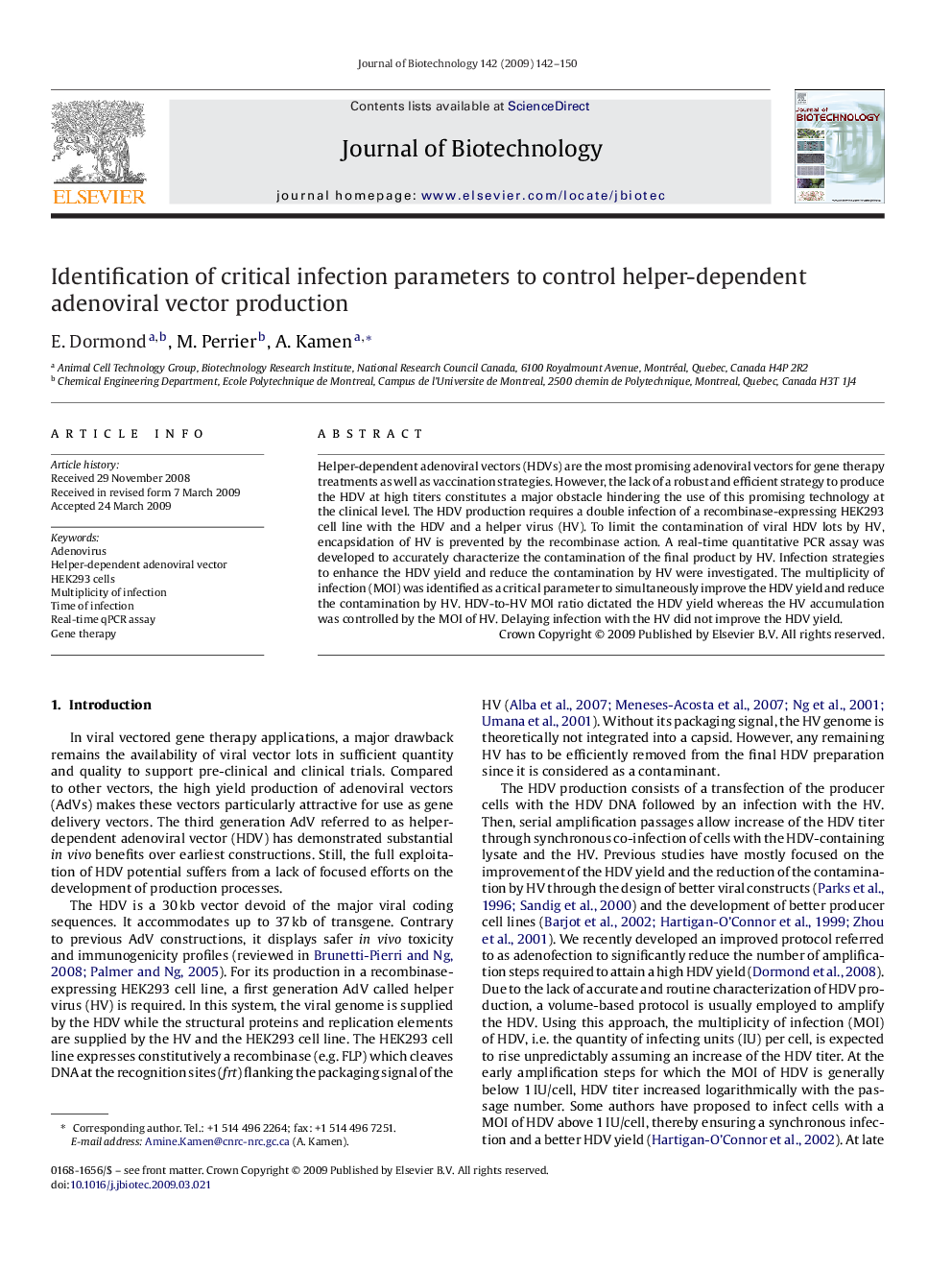| Article ID | Journal | Published Year | Pages | File Type |
|---|---|---|---|---|
| 24586 | Journal of Biotechnology | 2009 | 9 Pages |
Helper-dependent adenoviral vectors (HDVs) are the most promising adenoviral vectors for gene therapy treatments as well as vaccination strategies. However, the lack of a robust and efficient strategy to produce the HDV at high titers constitutes a major obstacle hindering the use of this promising technology at the clinical level. The HDV production requires a double infection of a recombinase-expressing HEK293 cell line with the HDV and a helper virus (HV). To limit the contamination of viral HDV lots by HV, encapsidation of HV is prevented by the recombinase action. A real-time quantitative PCR assay was developed to accurately characterize the contamination of the final product by HV. Infection strategies to enhance the HDV yield and reduce the contamination by HV were investigated. The multiplicity of infection (MOI) was identified as a critical parameter to simultaneously improve the HDV yield and reduce the contamination by HV. HDV-to-HV MOI ratio dictated the HDV yield whereas the HV accumulation was controlled by the MOI of HV. Delaying infection with the HV did not improve the HDV yield.
